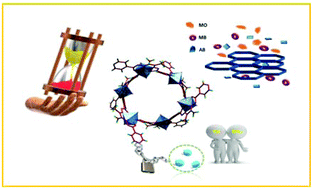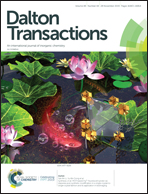A stimuli responsive multifunctional ZMOF based on an unorthodox polytopic ligand: reversible thermochromism and anion triggered metallogelation†
Abstract
A novel Cd(II)-ZMOF with a unique sodalite topology has been successfully designed and synthesized using a flexible polytopic compartmental ligand. The microporous complex contains 1D hexagonal channels with large void space for the accommodation of guest molecules. This work demonstrates a new paradigm for designing and functionalizing zeolite-type frameworks. The triconnected linker forms coordination polymer gels in the presence of Cd2+ and the gelation was controlled by the presence of specific anions. They possess good thermal stability and exhibit thixotropic behavior. Optical properties revealed that the complex is exclusively thermochromic and undergoes a reversible transition at 80 °C, changing its color from yellow to orange red. Owing to the large voids in the framework, the complex can serve as a host for use in dye adsorption. Thus this paper offers a new MOF material with exceptional chromic behavior, gelation properties and adsorption capability for the development of high performance multifunctional materials.



 Please wait while we load your content...
Please wait while we load your content...